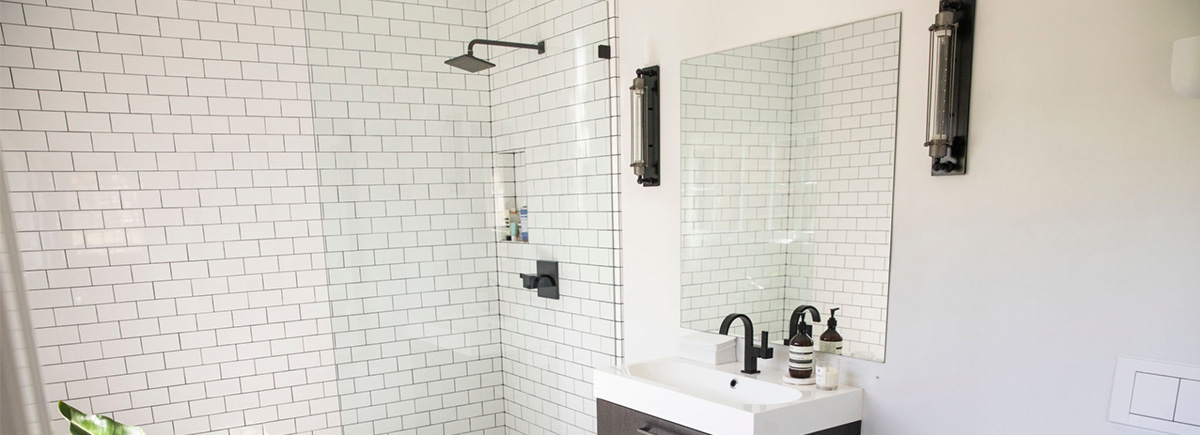5 Tips for Resealing Your Shower
If you’ve found yourself with a leaking shower, there’s a good chance it isn’t sealed correctly. While that may not sound like a serious issue, a small shower leak can soon become an expensive headache if left untreated.
From high water bills to unhealthy mould and mildew, and in the worst case, even structural damage to your home, a leaky shower can quickly turn from a minor repair job into a significant hit on your bank balance.
If diagnosed early, resealing your shower offers a highly effective, long-term solution to protect your bathroom and finances. So, if you’re looking for an effective shower sealing process, follow our top five tips:
1. Understand Australian Building Codes and Standards
Most people think that resealing a leaking shower is a quick DIY job, and while that’s true to some extent, there can be more to it than that.
In Australia, we’re bound by building codes and regulations that must be followed when waterproofing your bathroom, especially when laying your shower membrane, to create a waterproof barrier between the shower and the floor.
If you need a new membrane to stop the leak, AS 3740-1994 states the following:
- You must waterproof the entire shower floor
- Your shower walls must be waterproofed up to at least 1800mm
- The step-down area is waterproofed to at least 150mm.
Some states also require the person carrying out the waterproofing work to have a waterproofing licence—so make sure any tradespeople working on your bathroom are compliant and have an up-to-date licence.
2. Find the cause of the leak
Once you’re sure you comply with the latest building regulations, the next step is understanding where the leak is coming from. In most cases, your shower will leak because of deteriorated grout or sealant, and both are easy to spot because they will be peeling, mouldy, or crumbling away.
If your deteriorated sealant isn’t apparent to the naked eye, you can try the spray test. Just splash some water on your sealant, and if the water drips down, your sealant is still in good condition. But, if the water penetrates the grout or sealant, grab a paper towel and try blotting the area—if it comes away damp, then it’s time to fix your shower.

3. Carefully remove the old sealant
If your sealant does need replacing, it’s time to get to work. The first step is to remove the old sealant, which you can do with a softening agent and a sharp blade.
Start by applying the softening agent to the silicon, then let it settle for a few hours to work its magic. Once the silicon has softened, use your blade to scrape it away. Then, remove any grime, dirt, old adhesive, or other residues, leaving behind a nice clean—and, importantly—even surface.
Once your shower is free from old sealant and residue, clean the recesses with a cleaning solution (we suggest using a non-ammoniated bath cleaner). Once dry, you’re ready to apply the new silicone.
4. Take care with the corners
This one sounds obvious, but it’s surprisingly easy to get wrong: take extra care in sealing areas where your waterproof membrane may be exposed. This is because water can quickly work its way behind your tiles, especially in the following places:
- Behind the tapware
- Where your tiles meet the corners
- Where the wall meets the floor
- Where your glass shower screen meets the tile surface.
If any of these areas are exposed due to insufficient sealant, you run the risk of further water damage occurring. We should also note that some regions of your shower are susceptible to movement—for example, where the wall meets the floor—so it’s important to inspect every corner to ensure there’s sufficient silicone.
5. Use the proper tools
To make the job as easy as possible, ensure you have the right tools and equipment before you start. After all, there’s nothing worse than getting halfway through a job and realising you need another trip to the hardware store.
For a straightforward sealing job, we suggest investing in a decent silicone gun, sealant, a sharp blade, mineral turpentine (for cleaning), and a few fresh cloths. You should also wear gloves to protect your hands from sharp pieces of tile or grout and have an old vacuum cleaner available to tidy up your working area quickly.
Too much hassle? Call in the pro’s
Shower resealing can take time and skill to get right. You can call professionals to get the job done quickly and easily. Our goal is to provide complete peace of mind regarding shower resealing, offering fast, accurate service with close attention to detail.
Contact our friendly team at Shower Solutions today for the best shower sealing service Perth has to offer.

